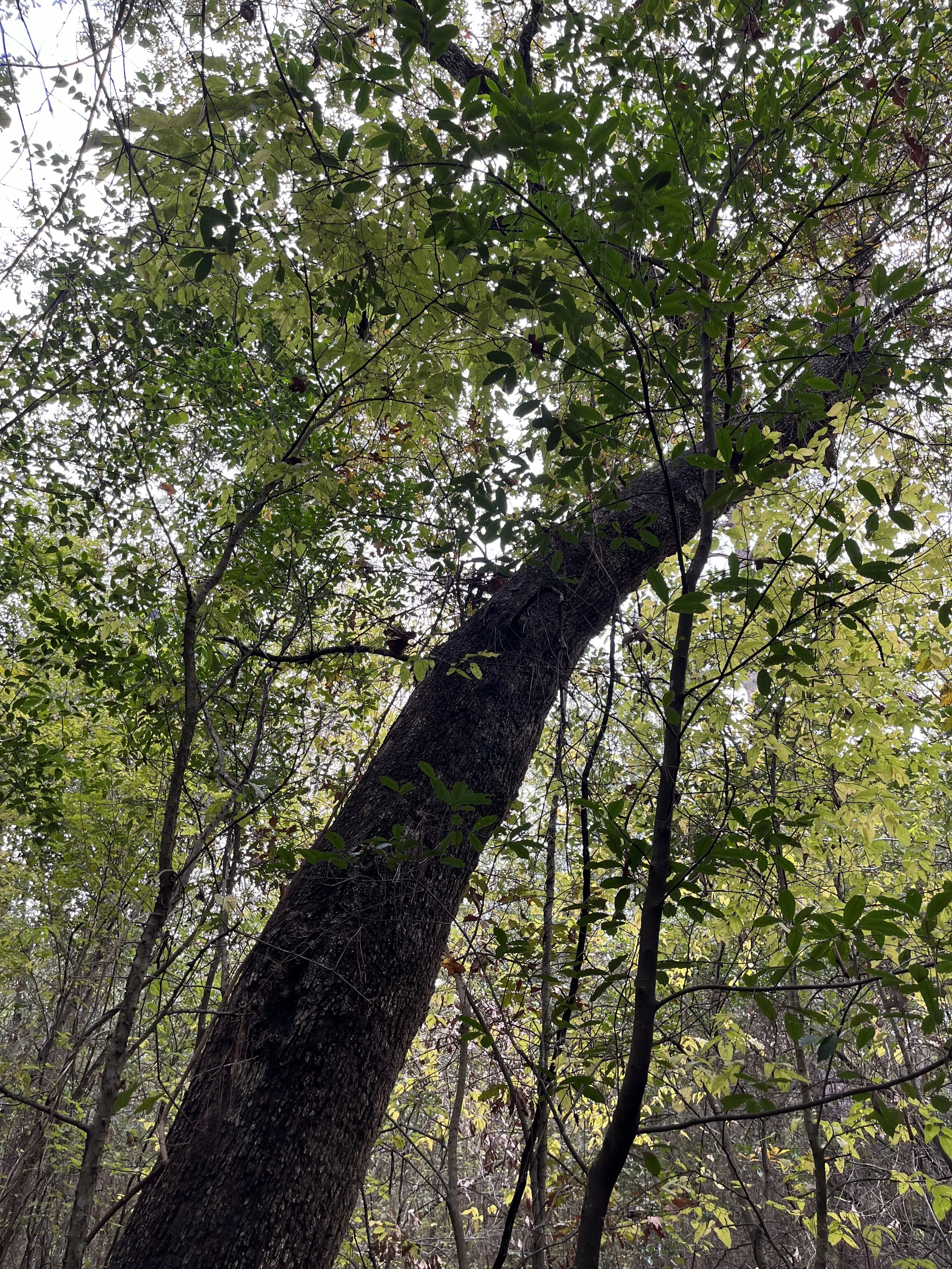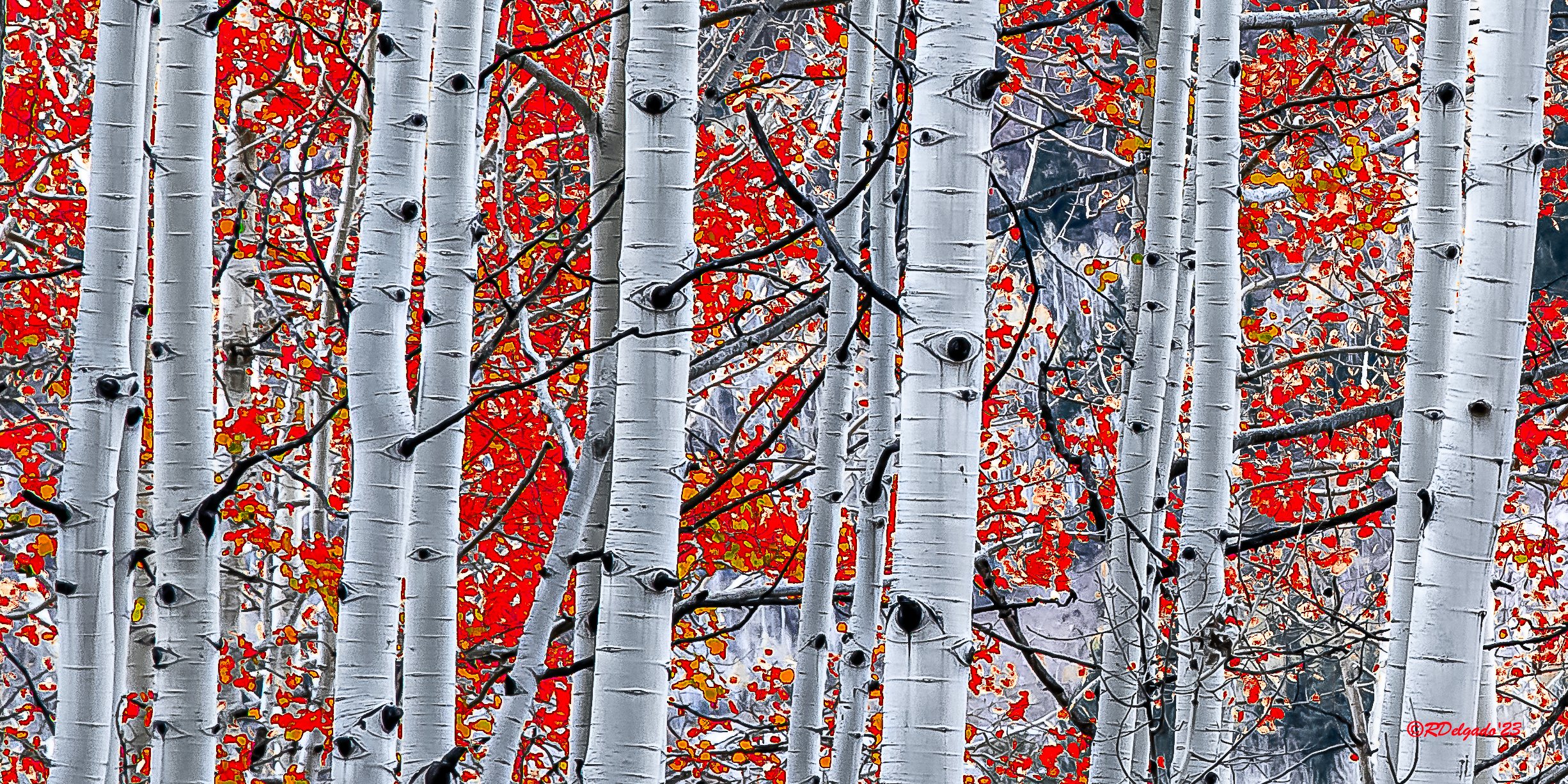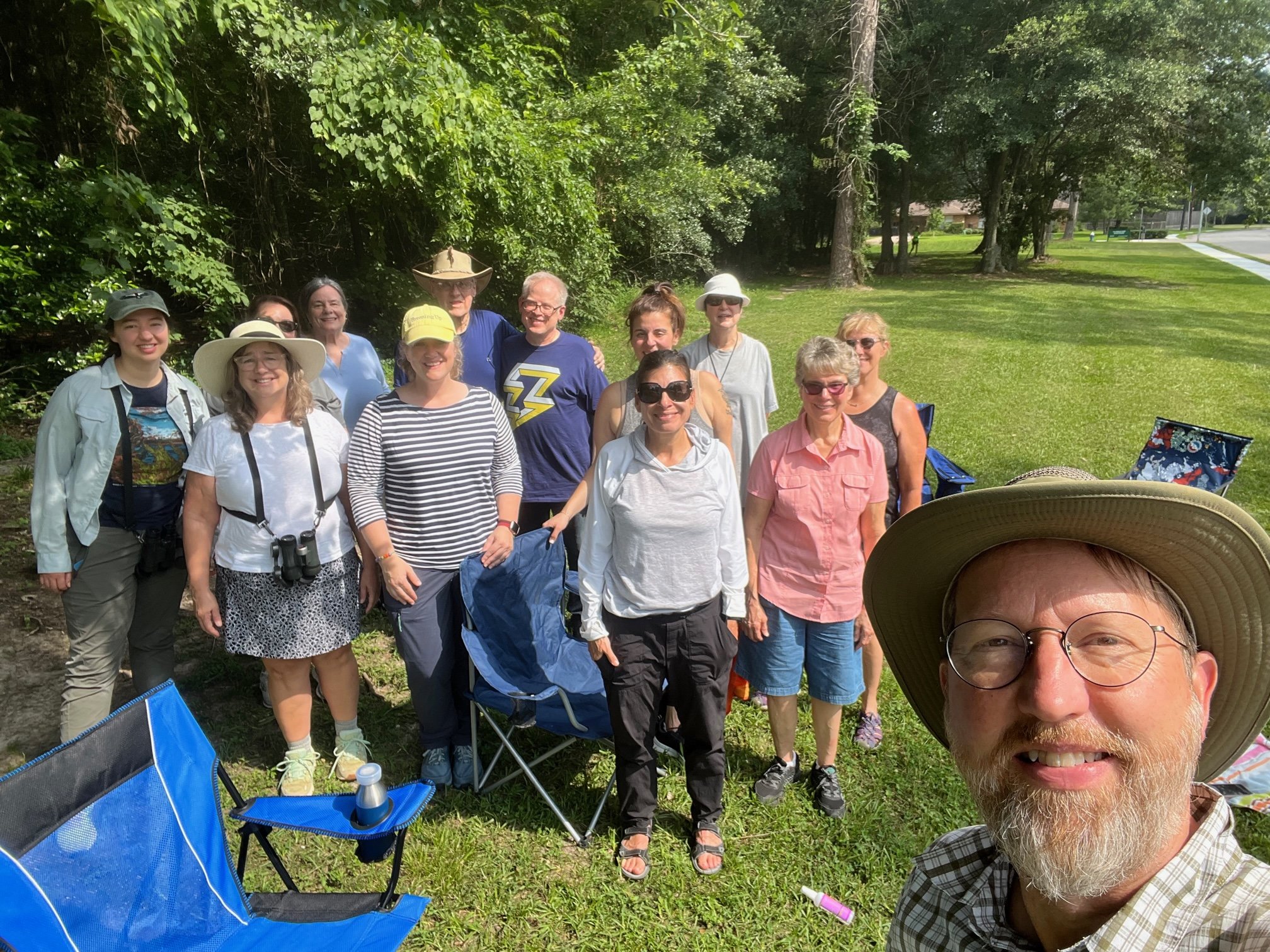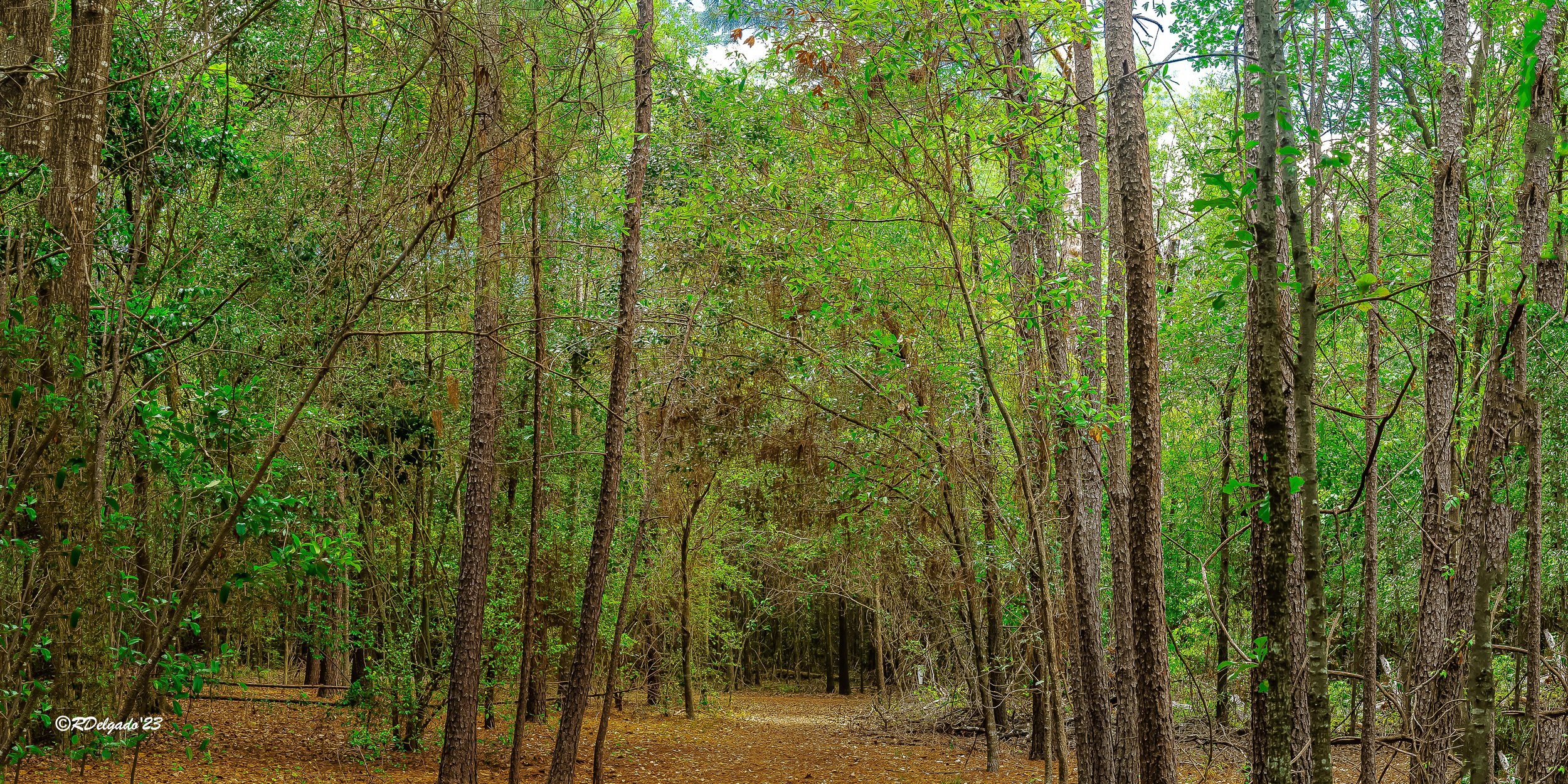This was lead by Laura Mayo, the Senior Minister of Covenant Church and is active in Houston interfaith work.
We gathered and greeted each other. We began by finding a comfortable spot and doing deep breathing, holding our breath after each inhale and exhale. We added the use of mantras to our deep breathing:
Breathe in peace, Breathe out worry.
Breathe in ease, Breathe out pain.
Breathe in joy, Breathe out sorrow.
Breathe in life, Breathe out fear..
Breathe in hope, Breathe out despair
From our deep breathing we moved into a guided meditation.
For this meditation you will need a bucket. Perhaps you will use a sandcastle bucket or an old metal bucket from your childhood. Imagine yourself walking through The Lorraine Cherry Nature Preserve with your bucket. As you walk, you hear the crunch of leaves under your feet. A leaf catches your eye. It is brown around the edges with yellow in the middle. This leaf represents your worry for your family. This is the concern you feel for your family members who are sick, who are struggling, or who are at loose ends. You pick up this leaf, it is heavier than you expect, and you add it to your bucket. You continue walking and you see a large tree with a bright green leaf under it. This leaf is the concern you have for your work/your daily tasks. This is the worry for all the to-do lists and the many things that demand your time and energy. You put this leaf in your bucket and notice that your bucket is very heavy now. As you begin walking again, you move the bucket to your other hand.
You notice a large puddle and in it another leaf is floating. This one is even larger than the last leaf. It is almost all brown and the veins are very pronounced. This leaf is your worry for our city, our country and our world. This is all of your concern for elections and wars and for our planet and the people and animals and plants that share this world with us. You carefully lift this leaf from the water and add it to your bucket. You begin walking again. You need to go slower now because your bucket is so heavy. As you walk you see a stump and on the stump is a yellow leaf with little bits of orange on the edges. This is your worry for yourself. Think of all your worries: the things that wake you at night, that come into your mind while you are trying to do other things, every concern you carry. You pick up this leaf and add it to your bucket. Your bucket is so heavy now that you must switch hands again as you begin to walk.
The bucket is really too heavy to continue to carry it. You decide you need to put these leaves back in the nature preserve. You find the leaf that represents your worry for your family. You place it carefully under a vine and as you place it you say to all of your family:
May you be happy, May you be safe.
May you be healthy, May you be know ease.
May you be at peace, May you know you are loved.
You pick your bucket up again and move further into the preserve. You see a decomposing log and you put your bucket down. You find the leaf that represents your worry for your work/your daily tasks. You place this leaf underneath the decomposing log and you say:
May you be happy, May you be safe.
May you be healthy, May you be know ease.
May you be at peace, May you know you are loved.
The bucket is lighter now and easier to carry. You continue to walk. You notice a fork in the path you are on and stop in the middle. You find the leaf that represents the worry you have for our city, our country, our world. You put the leaf down and you say:
May you be happy, May you be safe.
May you be healthy, May you be know ease.
May you be at peace, May you know you are loved.
The bucket is so light now. Walking is much easier. You walk for a while just listening to the birds and noticing the sound of your feet. You see a young tree. It is small but growing. You place your last leaf by the young tree. This last leaf is the one that represents your worry for yourself. As you place it you say:
May I be happy, May I be safe.
May I be healthy, May I be know ease.
May I be at peace, May I know you are loved.
Your walking now is so much easier. Your bucket is light. You can feel the fresh air on your face and in your hair. The birds seem to be louder. You feel free and gentle.
After the meditation, we moved into The Lorraine Cherry Nature Preserve for a meditative walk for 20 minutes and then regathered. Several people shared how helpful the guided meditation was to help them release their worries.













